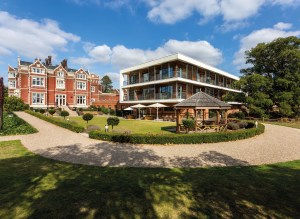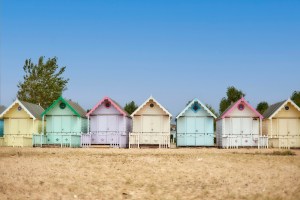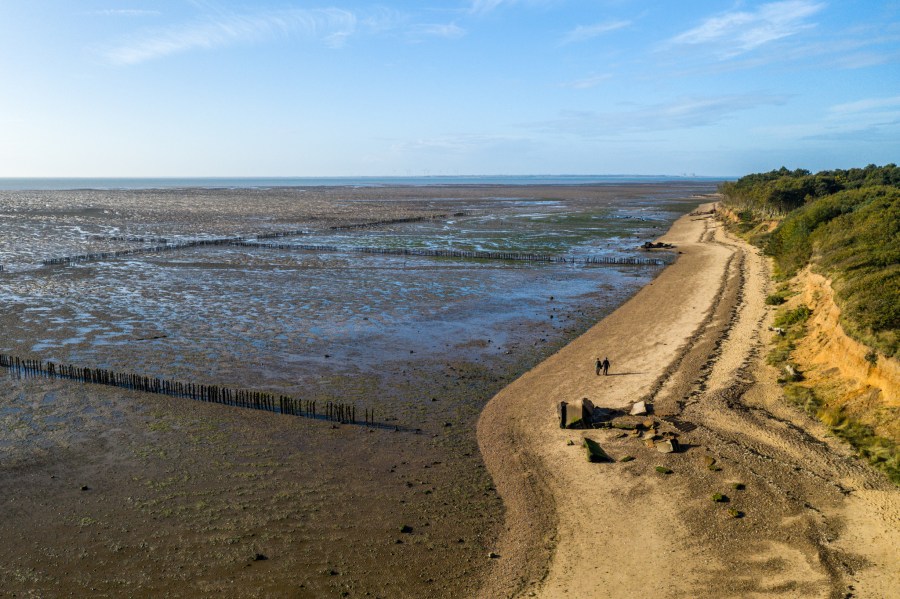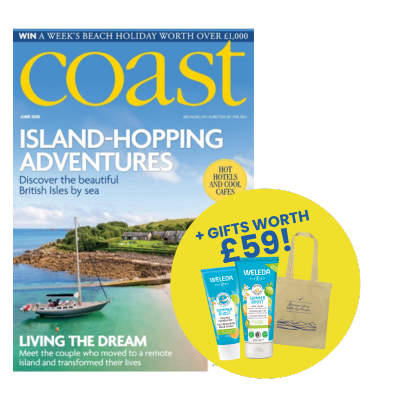SAM COOPER discovers plenty to see and do as he takes in a tour of a not-so-familiar county – North Essex.
I must admit, my knowledge of North Essex had been somewhat limited before this trip. If a not-to-be-mentioned 2010s reality TV show had taught me anything, this was the land of fake tan and bleached teeth but my impressions went little further than that.
That is a shameful admission really considering my mum was born in Chelmsford and I am from the neighbouring county of Suffolk, so when an invitation arrived from Visit Essex asking if I wanted to explore some of the county’s finest areas, I left it in their capable hands as to where to send myself and my partner.
Travelling from London, our base for the trip was Wivenhoe House Hotel, an 18th-century manor hotel which is a short trip away from the county’s biggest city, Colchester. (wivenhoehouse.co.uk/)
The hotel is a gorgeous relic of England’s past and it is hard to think of better praise than it being the subject of a John Constable painting which currently resides in the National Gallery of Art in Washington DC.
Like many buildings of this ilk, there is plenty of history behind the red brick walls. It began life in 1759 but in its more recent history, it was requisitioned by the War Department for both World Wars with Sir Winston Churchill once inspecting the troops on site. The late Queen Elizabeth II and Nelson Mandela have also both stayed at the hotel in the past.
The surroundings of the house have changed somewhat since Constable’s days and while green areas continue to encircle it, the hotel is also now next to the University of Essex campus, meaning the approach will take you past the various fields and courts used by the university’s sporty students.

And while the main building remains the same as it was in Constable’s depiction, it has also moved with the times with the addition of a more modern separate wing which I am sure is used by plenty of the parents dropping their child off at university for the first time but wanting to stay within close proximity in case of any first-night disasters.
The choice of rooms ranges from classic all the way to deluxe with the latter choice boasting a unique room configuration with all the modern amenities you would need. We stayed in the Charles Gooch room, named after the last private resident before the house was opened to the public, which was an enormous room with an equally large bathroom featuring his and her sinks, shower and bathtub.
The room’s large windows allow you to see out across the local surroundings and a chance to look at the wildlife depending on the year and temperature. When we visited, The Traitors happened to be on TV and you would be hard-pressed to find a more apt venue to watch the show after a day of exploring.
After we dropped off our bags, the first stop on our tour was to head five minutes down the road to the The Flag pub in Wivenhoe and a five-minute drive from the hotel (theflagwivenhoe.co.uk).
The Flag is a stunning, recently renovated gastro pub and a cosy place to while away an afternoon with delightful staff and a fantastic menu including delicious pub classics with an elegant twist. Given we visited in January, the option of sitting by the fire was also very much welcomed ahead of setting off for an explore.
After that, we headed south to Brightlingsea Harbour which is another example of a historic site given a recent renovation. Given its location, it is a busy harbour with plenty of large boats arriving – including concrete for HS2 but the less said about that the better – but it is also now home to plenty of residents thanks to the modern flats built on the port.
To get a better impression of the area, we were kindly invited on a tour of the harbour by the Brightlingsea Harbour Commissioners who took us out on one of their boats and across the surprisingly calm sea (brightlingseaharbour.org/). Like many coastal towns, this place comes alive during the warmer months and the harbour team offers a number of options to get the visitors out on the water.

For some, that may be as simple as a taxi from Brightlingsea to picturesque spots such as Point Clear or Mersea Island but if sailing in comfort is more your style, they offer pub lunch cruises including a panoramic trip up the River Colne and to Wivenhoe. They also do tours of the harbour to give you a look up close at the many boats and vessels that call this port home.
Next was a trip to another gorgeous bundling in the form of St Osyth Priory (stosythpriory.co.uk/). The beauty of the UK is that you are never too far away from a building with a story and St Osyth Priory certainly has a few to tell. Its history dates back almost 1,400 years to the English saint Osgyth (or Osyth) who died around 700 AD.
The reason the town takes the saint’s name is that she was forced into a marriage with the King of Essex but while he was off hunting a white stag, Osgyth convinced two local bishops to accept her as a nun and after her husband’s death, she established a convent in the hamlet of Chich. While I’ll spare you the rather gruesome end Osgyth reportedly met at the hands of the Vikings, her story was what gave the town its name and in 1120, an abbey was opened by Richard de Belmeis, Bishop of London. Remarkably, more than 900 years later some portions of that original building survive today.
In 1553, the building was handed to Thomas, 1st Lord Darcy and it remained in the family until the First World War when it was reacquired by the state. Eventually the Sargeant family took ownership of it and set about refurbishing it and only recently opened it to the public.
A tour around the grounds will show just how perfect a place it is to stay and with a number of rooms, including a large dining hall that overlooks the garden below, it is unsurprisingly a popular spot for weddings.
After lunch within the grounds, we headed to Walton-on-the-Naze for another history lesson but only this time, 1,400 years ago seemed relatively new. The Naze Nature Discovery Centre (essexwt.org.uk/nature-reserves/naze) is managed by the Essex Wildlife Trust and you would do well to arrange a talk with a passionate volunteer called Peter.

Peter has been collecting fossils from around the area for decades and can explain how the location of Walton-on-the-Naze on the south coast with its harsh weather has led to a truly unique ecological area. After you’ve seen Peter’s collection, you can walk down the cliff and onto the beach to see if you can spot some fossils of your own.
A packed day of adventure was capped off with a visit to the Greyfriars Hotel in Colchester and its restaurant Cloisters. This was a gorgeous, elegant establishment in a part of the building that dates back to the early 20th century and featured an exquisite, high end menu including locally sourced meats and dishes from East Anglia, with an extensive wine list. (greyfriarscolchester.co.uk)
Our final day was spent taking a trip to Mersea Island, a seven-square mile piece of land just off the coast. Despite its one-road access (watch for tide times if you plan to visit!), the island is home to a population of a little under 7,000 and has many areas to see. On the east, is the Cudmore Grove Country Park which is again home to plenty of history, including some former Second World War pillboxes, as well spectacular views over the sea.
If you head west you will find an array of independent shops, guesthouses and restaurants with the latter almost guaranteed to serve local oysters, such is their plentiful presence in the nearby waters.
Our lunch stop came at the White Hart Inn (whitehartinnmersea.co.uk/) which was another fabulous eating establishment where you can enjoy a gorgeous meal and drinks whilst waiting for the tide to change and allow you access back off the island.
After that, it was time to head home with my opinion of Essex firmly corrected!
For things to do in Essex, see visitessex.com







